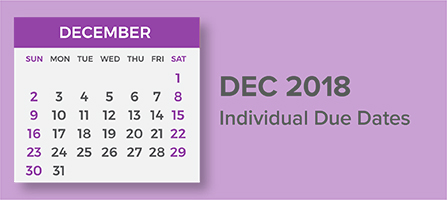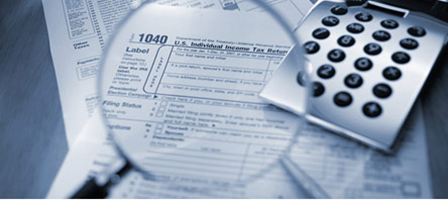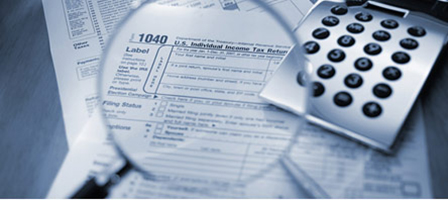IT’S TAX TIME! PLAN AHEAD FOR YOUR APPOINTMENT
Are You Ready?
If you’re like most taxpayers, you find yourself with an ominous stack of “homework” around TAX TIME! Unfortunately, the job of pulling together the records for your tax appointment is never easy, but the effort usually pays off when it comes to the extra tax you save! When you arrive at your appointment fully prepared, you’ll have more time to:
- Consider every possible legal deduction;
- Better evaluate your options for reporting income and deductions to choose those best suited to your situation;
- Explore current law changes that affect your tax status;
- Talk about possible law changes and discuss tax planning alternatives that could reduce your future tax liability.
Choosing Your Best Alternatives
The tax law allows a variety of methods for handling income and deductions on your return. Choices made at the time you prepare your return often affect not only the current year, but later-year returns as well. When you’re fully prepared for your appointment, you will have more time to explore all avenues available for lowering your tax.
For example, the law allows choices in transactions like:
Sales of property
If you’re receiving payments on a sales contract over a period of years, you are sometimes able to choose between reporting the whole gain in the year you sell or over a period of time, as you receive payments from the buyer.
Depreciation
You’re able to deduct the cost of your investment in certain business property using different methods. You can either depreciate the cost over a number of years, or in certain cases, you can deduct them all in one year.
Where to Begin?
Ideally, preparation for your tax appointment should begin in January of the tax year you’re working with. Right after the new year, set up a safe storage location – a file drawer, a cupboard, a safe, etc. As you receive pertinent records, file them right away, before they’re forgotten or lost. By making the practice a habit, you’ll find your job a lot easier when your actual appointment date rolls around.
Other general suggestions to consider for your appointment preparation include:
- Segregate your records according to income and expense categories. For instance, file medical expense receipts in an envelope or folder, interest payments in another, charitable donations in a third, etc. If you receive an organizer or questionnaire to complete before your appointment, make certain you fill out every section that applies to you. (Important: Read all explanations and follow instructions carefully to be sure you don’t miss important data – organizers are designed to remind you of transactions you may miss otherwise.)
- Keep your annual income statements separate from your other documents (e.g.,W-2s from employers, 1099s from banks, stockbrokers, etc., and K-1s from partnerships). Be sure to take these documents to your appointment, including the instructions for K-1s!
- Write down questions you may have so you don’t forget to ask them at the appointment. Review last year’s return. Compare your income on that return to the income for the current year. For instance, a dividend from ABC stock on your prior-year return may remind you that you sold ABC this year and need to report the sale.
- Make certain that you have social security numbers for all your dependents. The IRS checks these carefully and can deny deductions and credits for returns filed without them.
- Compare deductions from last year with your records for this year. Did you forget anything?
- Collect any other documents and financial papers that you’re puzzled about. Prepare to bring these to your appointment so you can ask about them.
Accuracy Even For Details
To ensure the greatest accuracy possible in all detail on your return, make sure you review personal data. Check name(s), address, social security number(s), and occupation(s) on last year’s return. Note any changes for this year. Although your telephone number isn’t required on your return, current home and work numbers are always helpful should questions occur during return preparation.
Marital Status Change
If your marital status changed during the year, if you lived apart from your spouse, or if your spouse died during the year, list dates and details. Bring copies of prenuptial, legal separation, divorce, or property settlement agreements, if any, to your appointment.
Dependents
If you have qualifying dependents, you will need to provide the following for each:
- First and last name
- Social security number
- Birth date
- Number of months living in your home
- Their income amount (both taxable and nontaxable)
If you have dependent children over age 18, note how long they were full-time students during the year.
To qualify as your dependent, an individual must pass several strict dependency tests. If you think a person qualifies as your dependent (but you aren’t sure), tally the amounts you provided toward his/her support vs. the amounts he/she provided. This will simplify making a final decision about whether you really qualify for the dependency.
Some Transactions Deserve Special Treatment
Certain transactions require special treatment on your tax return. It’s a good idea to invest a little extra preparation effort when you have had the following transactions:
Sales of Stock or Other Property: All sales of stocks, bonds, securities, real estate, and any other type of property need to be reported on your return, even if you had no profit or loss. List each sale, and have the purchase and sale documents available for each transaction. Purchase date, sale date, cost, and selling price must all be noted on your return. Make sure this information is contained on the documents you bring to your appointment.
Gifted or Inherited Property: If you sell property that was given to you, you need to determine when and for how much the original owner purchased it. If you sell property you inherited, you need to know the date of the decedent’s death and the property’s value at that time. You may be able to find this information on estate tax returns or in probate documents. Assets inherited from someone who died in 2010 may have an inherited basis other than the value on the date of death; the executor of the decedent’s estate should have provided you with this information.
Reinvested Dividends: You may have sold stock or a mutual fund in which you participated in a dividend reinvestment program. If so, you will need to have records of each stock purchase made with the reinvested dividends.
Sale of Home: The tax law provides special breaks for home sale gains, and you may be able to exclude all (or a part) of a gain on a home if you meet certain ownership, occupancy, and holding period requirements. If you file a joint return with your spouse and your gain from the sale of the home exceeds $500,000 ($250,000 for other individuals), record the amounts you spent on improvements to the property. Remember too, possible exclusion of gain applies only to a primary residence, and the amount of improvements made to any other home you sold is required regardless of the gain amount. Be sure to bring a copy of the sale documents (usually the closing escrow statement) with you to the appointment.
Purchase of a Home: Be sure to bring a copy of the final closing escrow statement if you purchased a home.
Car Expenses: Where you have used one or more automobiles for your business, list the expenses of each separately. The government requires that you provide your total mileage, business miles, and commuting miles for each car on your return, so be prepared to have them available.
Vehicle Purchase: If you purchased a new plug-in electric car (or cars) this year, you may qualify for a special credit. Please bring the purchase statement to the appointment with you.
Charitable Donations: Cash contributions (regardless of amount) must be substantiated with a bank record or written communication from the charity showing the name of the charitable organization, date and amount of the contribution. Cash donations put into a “Christmas kettle,” church collection plate, etc., are not deductible. For clothing and household contributions, the items donated must generally be in good or better condition, and items such as undergarments and socks are not deductible. A record of each item contributed must be kept, indicating the name and address of the charity, date and location of the contribution, and a reasonable description of the property. Contributions valued less than $250 and dropped off at an unattended location do not require a receipt. For contributions of $500 or more, the record must also include when and how the property was acquired and your cost basis in the property. For contributions valued at $5,000 or more and other types of contributions, please call this office for additional requirements.
Health Insurance Coverage Reporting
Individuals are required to have minimum essential health insurance coverage, or for years before 2019, pay a penalty (unless eligible for an exemption). Generally, employer-sponsored plans will qualify, as will participation in Medicare, Medicaid or VA programs, or purchasing plans through the federal or a state Insurance Marketplace. A tax credit may be available if you purchased a policy through a Marketplace, and you may have already used an advance of the credit to subsidize your premium payments. If so, the advance and actual credits must be reconciled on your tax return. Employers, insurance providers and government programs will issue a version of Form 1095 to be used when preparing your return; be sure to bring all 1095s you received to your appointment.
Low Income Year?
If your taxable income is exceptionally low this year, or even if you expect not to be required to file a tax return this year, a number of tax opportunities may be available to you. But time is running short, since these opportunities will require action on your part before year’s end. Here are some examples:
Take IRA Distributions – Depending upon your projected taxable income, and if you are over age 59 1/2, you might consider taking an IRA distribution without paying any tax on the distribution.
Redeem Government Bonds – If you have invested in U.S. government bonds, such as Series EE or I bonds, you may want to consider cashing in some to avail yourself of tax-free interest income.
Convert Traditional IRA Funds into a Roth IRA – Roth IRAs provide tax-free accumulation and tax-free retirement distributions. So to the extent of any negative taxable income or even just for the lower tax rates, you may wish to consider converting some or all of your traditional IRA into a Roth IRA.
Zero Capital Gains Rate – There are three capital gains rates depending upon your taxable income. When your taxable income is in the lowest range, you will actually pay no tax on your long-term capital gains. Thus, if your taxable income is within the zero percent long-term capital gains rate bracket, this is an opportunity for you to sell some appreciated securities that you have owned for more than a year and pay no tax on the gains. Check with this office for the taxable income cut-off amount for the current year’s 0% capital gains rate.
There are other strategies as well in a low income year; please call for more information.
Identity Theft
Identity theft is becoming more prevalent and can impact your tax filings. If you have reason to believe that your identity has been stolen, please contact this firm as soon as possible. The IRS provides special procedures for filing if you have had your identity stolen.
The advice included in this article is not intended or written by this practitioner to be used, and it cannot be used by a practitioner or taxpayer, for the purpose of avoiding penalties that may be imposed on the practitioner or taxpayer.








Leave a Reply
Want to join the discussion?Feel free to contribute!